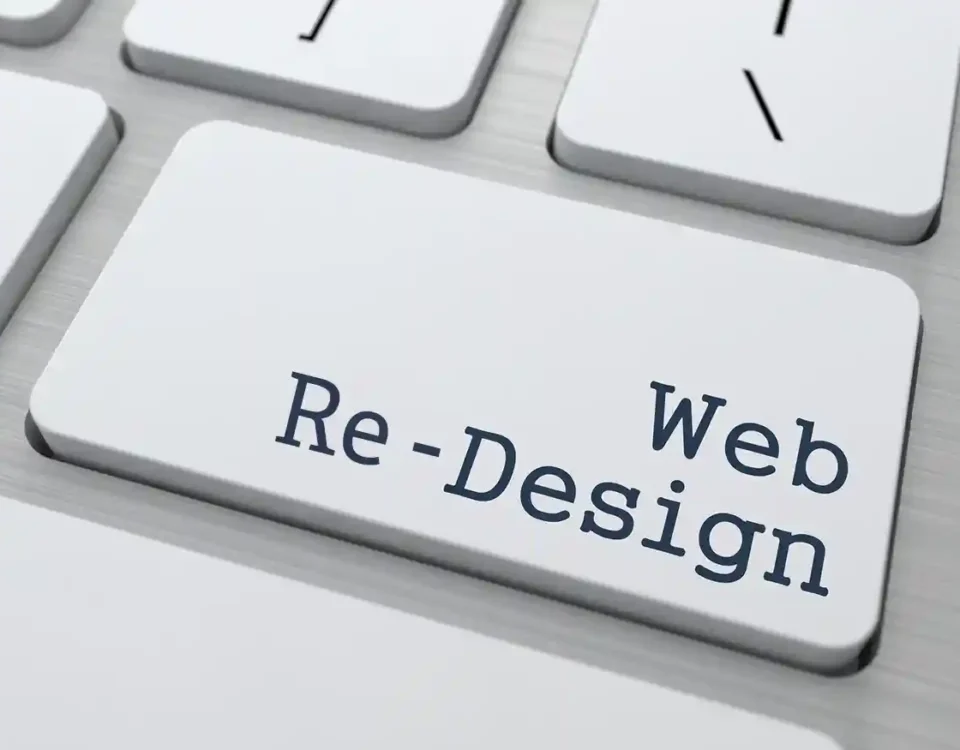
Brand Strategy for US Small Businesses: Building a Brand That Lasts
November 17, 2025
How White Label Web Design Works: Benefits for US Startups & Agencies
November 20, 2025
Brand Strategy for US Small Businesses: Building a Brand That Lasts
November 17, 2025
How White Label Web Design Works: Benefits for US Startups & Agencies
November 20, 2025Web Design Services for eCommerce
November 19, 2025
- 16 min to Read
Introduction
The online marketplace has changed dramatically over the last decade. What once felt like a convenient alternative to in-store shopping has now become the standard experience for millions of customers.
As a result, expectations for eCommerce websites have evolved. People want speed, clarity, trust, and an enjoyable journey from product discovery to checkout—without friction.
This shift has made web design services for eCommerce more important than ever. Businesses no longer compete only on price or product range; they also compete on user experience.
A well-designed eCommerce website guides customers naturally, removes doubts, and helps them make confident decisions. A poorly designed one creates hesitation and drives shoppers away.
This article explores the deeper role of design in eCommerce, the principles behind successful online stores, and the features that truly influence customer behavior.
If you’re planning to build or improve an online store, this guide will help you understand what matters—and why.
1. Why Design Matters in eCommerce Today
The success of an online store depends heavily on how it feels, functions, and responds to customer expectations. Modern shoppers explore many stores before making a purchase. They compare product quality, prices, shipping policies—but also how easy it is to navigate and trust the website. Design plays a role in all of these factors.
Here’s why:
First impressions create instant trust
Users judge a website within seconds. Clean layouts, visual balance, and professional typography immediately signal credibility.
Clarity reduces hesitation
Confusing layouts, tiny buttons, or unclear product information create doubt, which directly lowers conversions.
A smooth journey increases the likelihood of purchase
The easier it is to move from homepage → product page → checkout, the more sales an online store generates.
Design influences emotion
Colors, spacing, and imagery shape how customers feel. A calm, organized layout makes customers more willing to explore.
While ecommerce web design might sound like a technical subject, it is deeply behavioral. It focuses on how people think, browse, and decide.
2. The Principles Behind Effective eCommerce Web Design
Behind every successful online store lie a few core principles. These principles help designers create environments where customers feel comfortable, informed, and in control.
1. Simplicity
Shoppers prefer fewer distractions. A simple layout directs attention to products and reduces decision fatigue.
2. Visual hierarchy
Headings, product photos, buttons, and pricing must be arranged in order of importance. Customers should naturally know where to look next.
3. Consistency
Fonts, colors, spacing, and button styles must remain consistent across pages. Inconsistency creates doubts and disrupts user confidence.
4. Responsiveness
Customers switch between devices constantly. Good design ensures the store feels equally smooth on mobile, tablet, and desktop.
5. Speed
Fast websites create better experiences. Slow websites lose customers even before the homepage loads.
6. Accessibility
Readable text, adequate contrast, and keyboard-friendly navigation ensure all customers can interact with the store.
These principles guide the structure of web design services for eCommerce, no matter the industry or product type.
3. Essential Pages and Their Purpose
A strong eCommerce website is not just one good page—it’s a system. Each page has a role in guiding users from discovery to purchase.
Homepage: The Starting Point
The homepage introduces the brand and helps users understand what the store offers. A good homepage:
- highlights main categories
- showcases best-sellers
- includes banners or offers
- provides navigation cues
- builds trust with reviews or badges
Clarity here influences whether users stay or exit.
Category Pages: Organizing the Store
Category pages help users narrow down choices. They must offer:
- clear filters
- visible sorting options
- consistent product card layouts
- strong images
The purpose of these pages is to reduce the mental effort required to choose a product.
Product Pages: Where Decisions Are Made
Product pages have the highest impact on conversions. They should include:
- multiple, high-quality images
- detailed but simple descriptions
- clear pricing
- availability
- customer reviews
- delivery and return details
This is where users evaluate trust. The more complete and structured the information, the better.
Cart Page: Transition to Checkout
The cart should allow users to:
- review items
- change quantity
- see shipping costs
- understand total pricing
Any surprise fees or unclear charges often result in abandoned carts.
Checkout Page: The Final Step
The checkout process must be fast and predictable. Best practices include:
- fewer fields
- auto-fill options
- multiple payment methods
- clear progress indicators
- mobile-friendly design
A well-designed checkout boosts conversion significantly.
4. Features That Truly Influence Conversions
Beyond beautiful visuals, certain features have an outsized impact on sales. High-performing online stores share several common elements:
1. A powerful search function
Customers who search typically have strong buying intent. Good search tools offer suggestions, category matches, and quick results.
2. Effective filtering and sorting
Filters reduce frustration. Customers should refine products by price, brand, size, color, material, and more.
3. Fast-loading pages
Speed affects both SEO and conversion. A one-second delay can dramatically reduce sales.
4. Mobile-first layout
Mobile shoppers expect smooth scrolling, readable text, and large click areas.
5. Trust indicators
Badges, reviews, secure payment icons, and transparent policies increase confidence.
6. Personalization elements
Smart recommendations and related product sections help users discover items they didn’t initially plan to buy.
These features directly influence whether a user completes their purchase or leaves.
5. How eCommerce Web Design Impacts SEO
Search engines care deeply about user experience. Design decisions affect:
Crawlability
A clear site structure helps search engines understand your pages.
Page weight
Heavy images and scripts slow down ranking performance.
Internal linking
Smart linking between categories and product pages helps distribute authority.
Mobile responsiveness
Google rewards mobile-friendly sites.
Content layout
Readable text and proper heading structure improve search results.
Strong web design services for eCommerce therefore support SEO as naturally as they support user experience.
6. Modern Trends in eCommerce Web Design (2024–2025)
Design trends evolve as customer expectations change. New features are emerging that make shopping feel more interactive and intuitive.
1. Minimalist product-first layouts
Clean backgrounds and large product photos emphasize clarity.
2. Micro-interactions
Small animations increase engagement without distracting.
3. AI-driven recommendations
Personalized product lists improve relevance.
4. Dark mode options
User preference features improve comfort.
5. Shoppable videos
Videos that allow adding items directly to cart enhance interaction.
6. Sticky add-to-cart buttons
These keep key actions accessible while scrolling.
Trends do not replace fundamentals—they enhance them.
7. Common Mistakes Businesses Make in eCommerce Design
Even well-intentioned stores make errors that reduce conversions. The most common mistakes include:
- cluttered homepages
- low-quality product photos
- unclear pricing
- slow mobile versions
- difficult navigation
- long, complex checkout forms
- inconsistent design styles
Avoiding these mistakes can immediately improve performance.
8. Choosing a Design Team: What to Look For
Businesses often wonder how to select the right experts. Here is a helpful checklist:
1. Portfolio relevance
Do they understand product-heavy layouts? Have they built similar stores?
2. Strong understanding of UX
Designers must know how customers shop, not only how to make pages look attractive.
3. Speed and performance expertise
A beautiful site is useless if it loads slowly.
4. Mobile-first capabilities
The site must be planned for mobile from the start.
5. Transparent communication
Good teams explain decisions clearly.
6. Experience with your preferred platform
Shopify, WooCommerce, Webflow, etc.
This approach allows businesses to choose confidently—whether hiring in-house or outsourcing to specialists.
9. The Indian Landscape for eCommerce Design
India has seen a major surge in online shopping over the last few years. With increased digital adoption, businesses now actively look for ecommerce web design India solutions that can help them compete with both local and global brands.
In this expanding market, companies often seek specialized ecommerce web design services India to create stores that look modern, perform smoothly, and handle large inventories. Because of the scale and diversity of the Indian audience, design decisions must consider multiple languages, regional preferences, and various device types.
Many businesses partner with an experienced ecommerce web design company India to ensure they can build online stores that cater to these wide-ranging user needs.
Conclusion
Web design has become one of the strongest drivers of eCommerce success. It influences how easily customers discover products, how confidently they make decisions, and how smoothly they move through checkout.
A well-designed store feels simple, trustworthy, and effortless to use—qualities that shape long-term brand loyalty.
As online competition continues to grow, businesses need more than just a functional website; they need an experience that customers enjoy returning to.
Partnering with a reliable ecommerce web design agency, such as Upclues, helps brands create this level of clarity and usability.
Ready to refresh your brand?
Contact Upclues today and start your rebranding journey.





